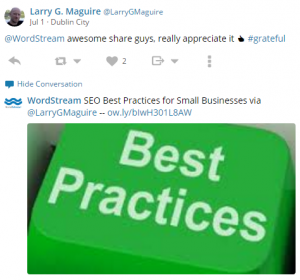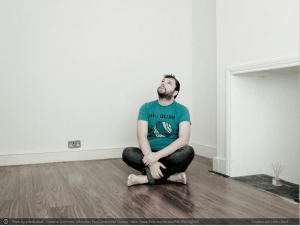SAM relies heavily on customer reviews, managed through Reputation
Pennsylvania-based Storage Asset Management, known as SAM, has an effective marketing strategy. Unusually, however, the company isn’t really striving to market itself.
“We are actually guilty of not doing a great job of marketing ourselves. All of our growth has been from word-of-mouth and referrals. We don’t actively market ourselves as best we could.” That’s what Melissa Stiles, VP of marketing and sales at SAM, told us. But that growth has been quite tangible, from launching with 22 management contracts in 2010, to running almost 350 contracts today.
Managing and marketing for third-party owners
What SAM does is manage storage facilities for third-party owners (SAM owns none of them). “We do everything, from operations and marketing to accounting, for a facility owner,” said Stiles. “Basically, everything but file their income taxes.”
The main focus of SAM’s marketing, then — about 95%, said Stiles — is marketing the third-party storage facilities they manage, and they execute primarily by leveraging customer reviews through online reputation management platform Reputation.
“I think we’ve been using Reputation for about five years,” said Stiles. “We’ve always been early adopters in the marketing realm, like search, etc. We were one of the first companies to be able to rent a unit online, so we identified quickly that reviews were going to become important. We looked for a company which could help us with a reputation management program, and Reputation met that need for us.”
A focus on reviews and SEO
Reviews help with SEO ranking, of course, but that’s not the only reason they’re important. “We know that about 50% of our customers have never used storage before,” said Stiles, “so people want to read the reviews before they choose their unit.”
SAM uses Reputation to actively solicit reviews, and also to respond to them “in one place.” To understand how important that is, consider that SAM represents some 76 different brands. That’s because SAM offers owners a choice between being part of their national brand — Storage Sense — or adopting their own branding, often naming facilities for the town they’re in.
“When I first got in the industry, there was a ton of facilities named ‘AAA self-storage,’ because that would put you first in the phone book; now it’s the town and self-storage, because that helps you with your SEO online.”
SAM handles not only reputation management through Reputation, but also builds websites, and helps with print marketing and signage. “We’ll build a user-friendly website that allows you to completely do your rental online, we’ll do SEO strategies — on-page and off-page, citation building, listings, etc. — social media, definitely Facebook, Instagram in some cases as well. AdWords and paid media if necessary.”
Related: Read about the growing importance of user-generated content.
Social media too
The Reputation platform handles social media, with messages from all feeds arriving in one in-box. “That’s been a life-saver for my social team. They don’t have to go across each Facebook page.” Seventy-six brands, remember.
“Google [My Business] released its messaging feature [for desktop] a few months ago,” said Stiles, “and we’re amazed by the amount of people that use it, and Google’s app isn’t great. When you’re managing this many pages, you see a notification and then have to figure out which page it came into. Reputation’s tool has been great at pulling that all together. We can see the metrics behind it too — how long was our response time, are we getting more customer service messages or sales, etc.”
Stiles uses SpareFoot, a nationwide storage discovery site which she describes as the Expedia of storage, but also relies on local outreach by having representatives build relationships with centers of influences likely to be good sources of customers — apartment complexes, for example.”
To build websites, SAM partners with The Storage Group for its vertical expertise, but everything else is done internally by a marketing team of eight.
And that’s how SAM has grown without trying too hard to market itself. “We’ve done a good job of focusing on our stores,” said Stiles. “Driving success for our stores has encouraged our owners to keep on buying, or to recommend us to someone else.”
Marketing Land – Internet Marketing News, Strategies & Tips
(54)
Report Post







